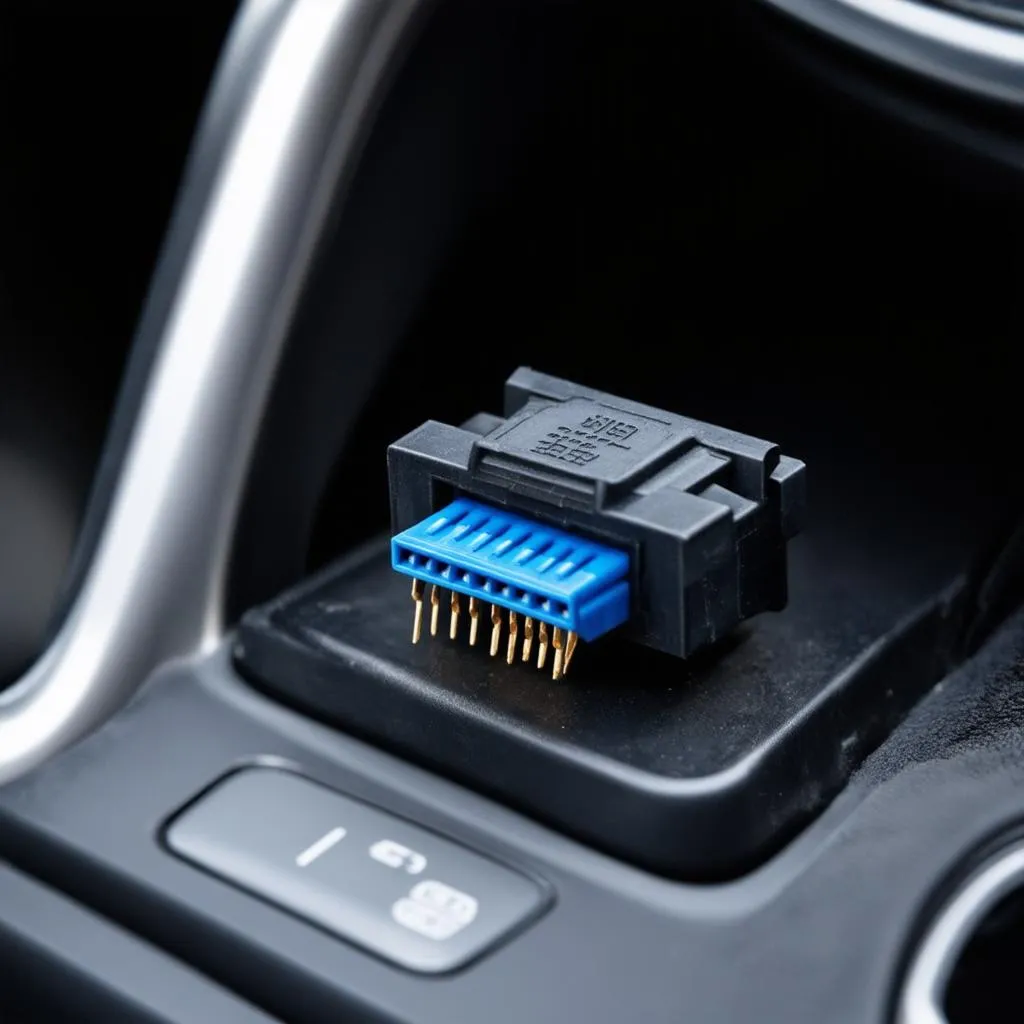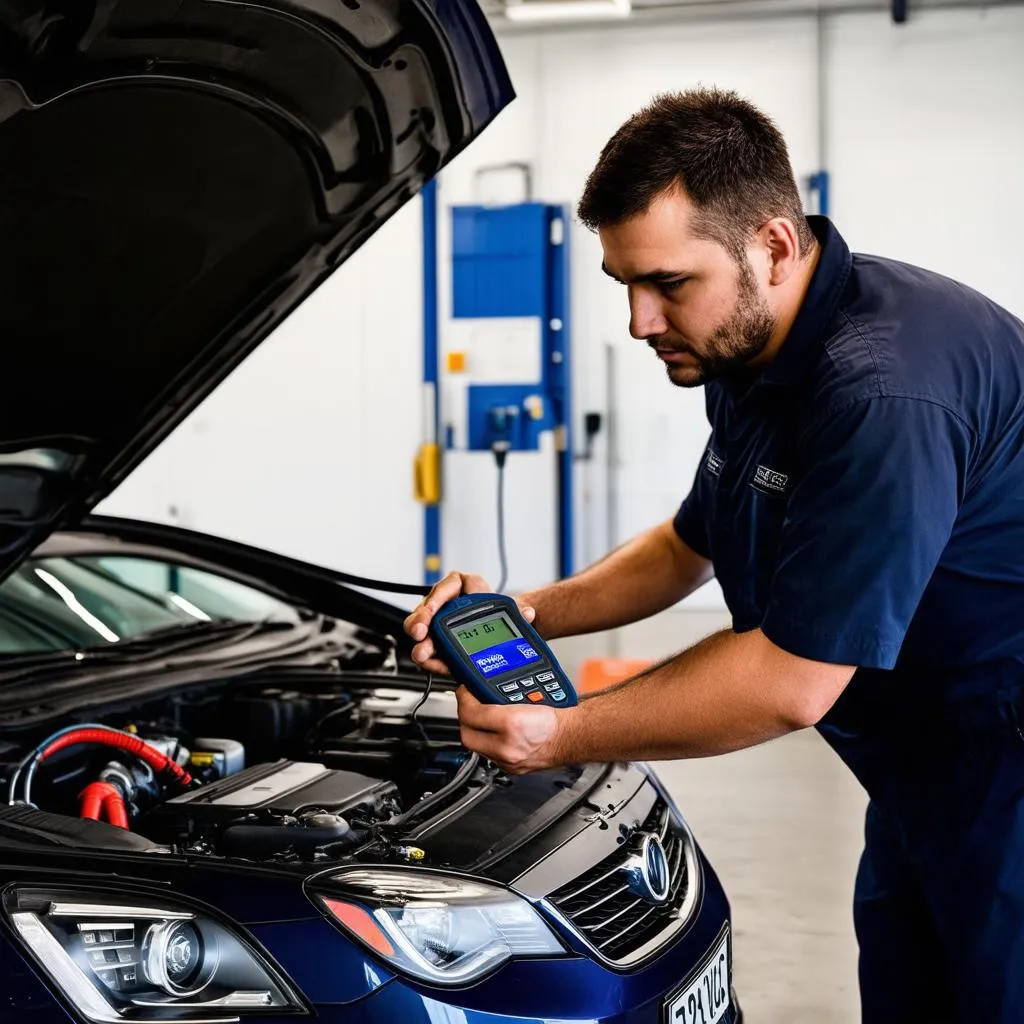Imagine this: you’re driving down the road, and your trusty car suddenly throws on the “check engine” light. Panic sets in, right? What’s wrong? Is it serious? Before you start picturing worst-case scenarios, remember the Obd Communication Protocol – your car’s way of talking to the outside world.
What is the Obd Communication Protocol?
The OBD, or On-Board Diagnostics, communication protocol is essentially the language your car uses to communicate with diagnostic tools, like dealer scanners for European Cars. Think of it like this: your car has a story to tell about its health and performance, but it needs a translator – that’s where the OBD protocol comes in. It takes complex data from your car’s computer and translates it into standardized codes and information that mechanics and even DIY enthusiasts can understand.
The History and Evolution of OBD
Believe it or not, the OBD protocol has been around for decades, evolving over time to become more sophisticated. Early versions were basic, offering limited insights into engine performance. Today, OBD-II, the current standard, provides a wealth of data on everything from emissions to transmission performance.
“The evolution of the OBD protocol has been instrumental in making car repairs more efficient and transparent,” says Dr. Emily Carter, an automotive engineer and author of “The Connected Car: A Deep Dive.” “Mechanics can now pinpoint issues with greater accuracy, saving time and money for car owners.”
How OBD Communication Works
At the heart of the OBD system is the OBD-II connector, a standardized 16-pin port typically located under the driver’s side dashboard. When you connect a compatible scan tool, it establishes communication with your car’s computer, also known as the Engine Control Unit (ECU).
The communication happens through a specific protocol, typically ISO 9141-2, ISO 14230-4 (KWP2000), or ISO 15765-4 (CAN) for most modern vehicles. These protocols define how data is packaged and exchanged between the scan tool and the ECU.
 OBD-II Connector
OBD-II Connector
Common Uses of the Obd Communication Protocol
So, how does understanding the OBD communication protocol benefit you? Here are a few ways:
1. Diagnosing Engine Problems:
Remember that “check engine” light? The OBD protocol is the reason mechanics can quickly identify the cause, whether it’s a faulty oxygen sensor or a loose gas cap.
2. Monitoring Car Performance:
Beyond diagnosing problems, the OBD protocol allows you to monitor various aspects of your car’s performance, such as fuel efficiency, engine speed, and even tire pressure in some vehicles.
3. Customizing Your Driving Experience:
Some advanced scan tools and apps utilize the OBD protocol to let you customize certain aspects of your car’s performance, such as throttle response and shift points.
Frequently Asked Questions about Obd Communication Protocol
What is the difference between OBD and OBD-II?
OBD-II is the updated and standardized version of the On-Board Diagnostics system, offering more comprehensive data and a universal connector.
Can I use any OBD scanner with my car?
While the OBD-II connector is standardized, not all scanners are compatible with all car makes and models. It’s essential to choose a scanner that supports your vehicle’s specific communication protocol.
Is it safe to use an OBD scanner on my car?
Using a reputable OBD scanner from a trusted manufacturer is generally safe. However, it’s crucial to avoid making any modifications or adjustments to your car’s settings unless you have proper knowledge and understanding.
Beyond Diagnostics: OBD and the Future of Car Repair
The OBD communication protocol has revolutionized how we diagnose and repair cars, and its impact continues to grow. With the rise of connected cars and telematics, the OBD protocol is poised to play an even more significant role in predictive maintenance, remote diagnostics, and even insurance assessments.
 Mechanic Using OBD Scanner
Mechanic Using OBD Scanner
Need Help with Your Car’s Diagnostics?
We understand that car troubles can be stressful. That’s why we offer expert support for all your diagnostic needs. Whether you need help interpreting OBD codes, installing diagnostic software, or simply want to learn more about your car’s health, our team of automotive specialists is here to assist you. Contact us via WhatsApp at +84767531508 for 24/7 support.
Don’t let car problems leave you stranded. Embrace the power of the OBD communication protocol and take control of your car’s health!